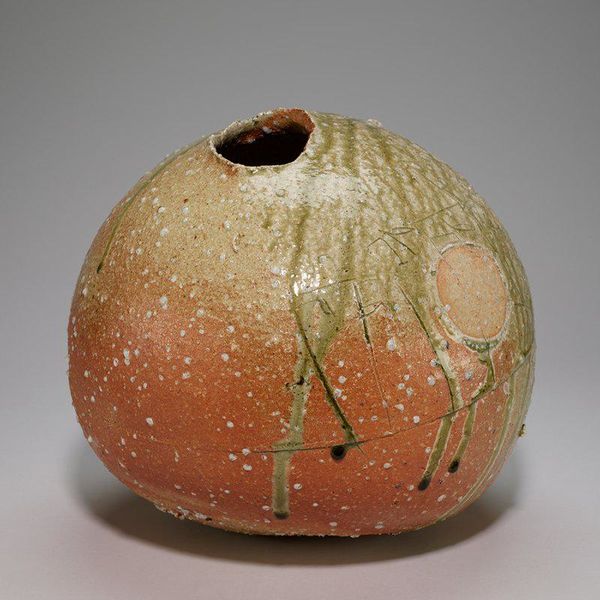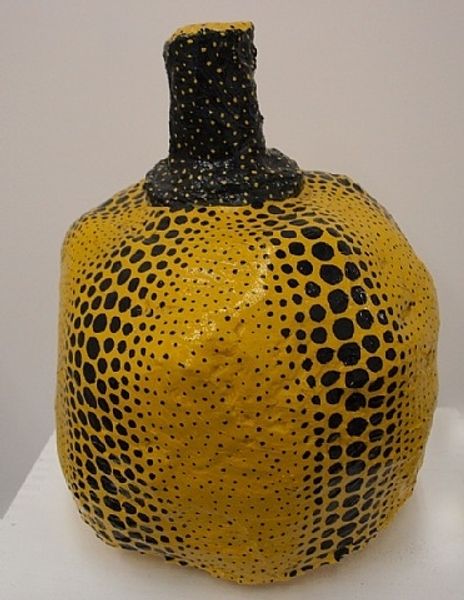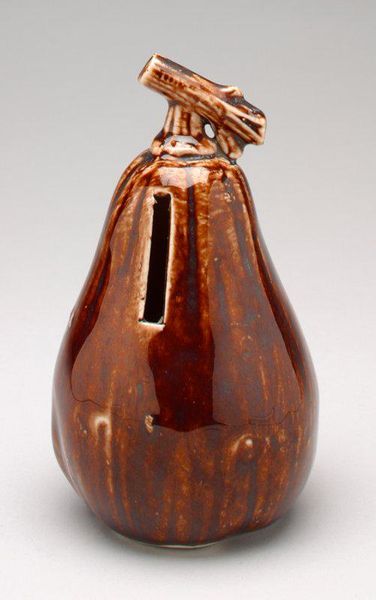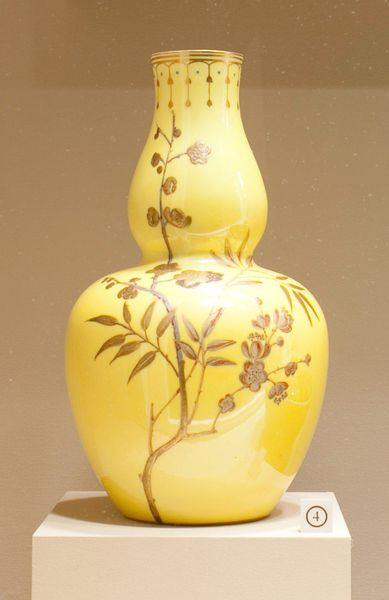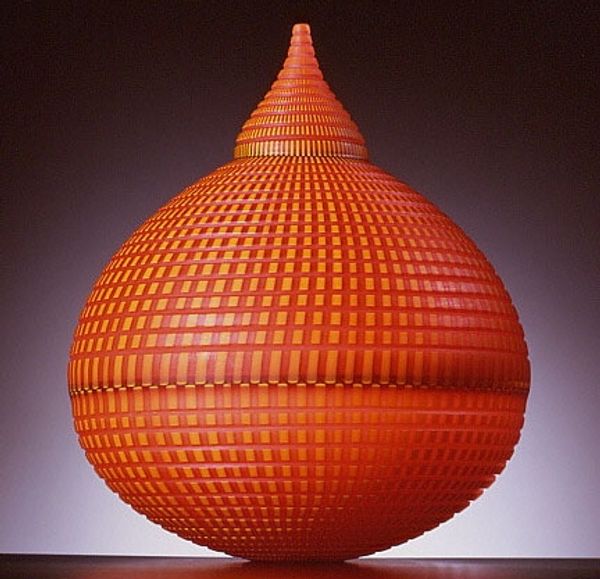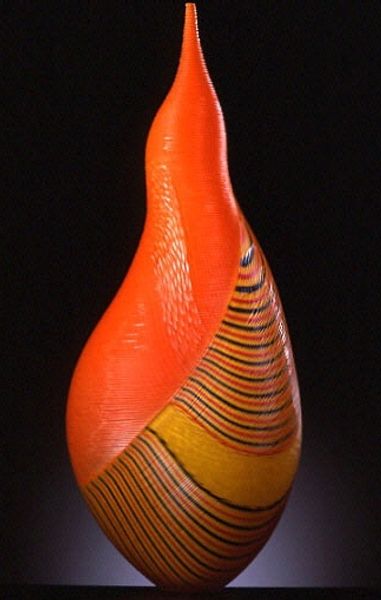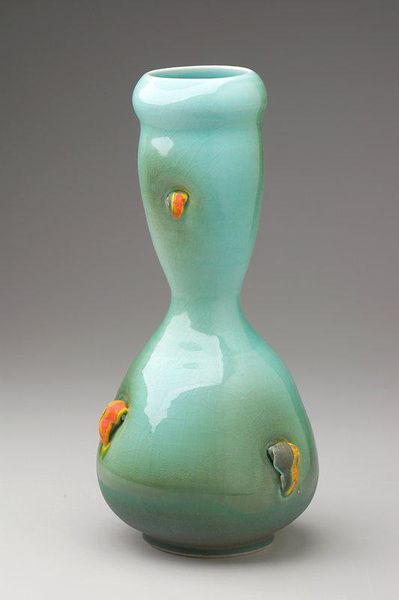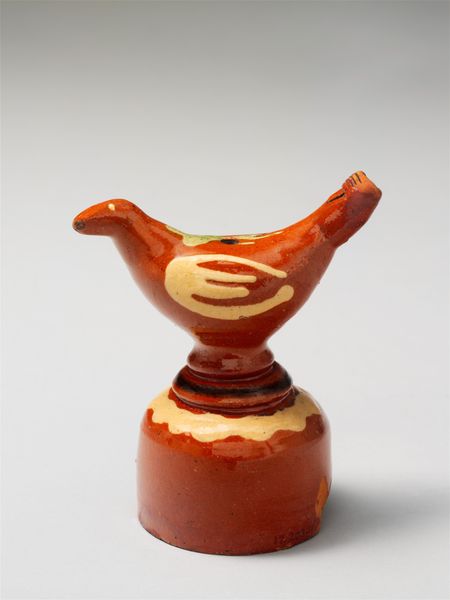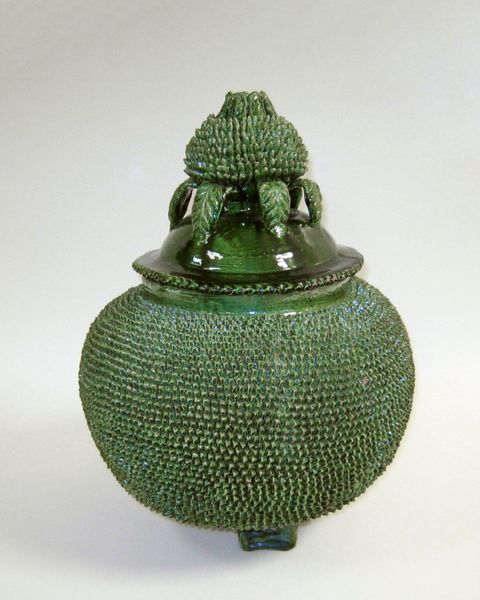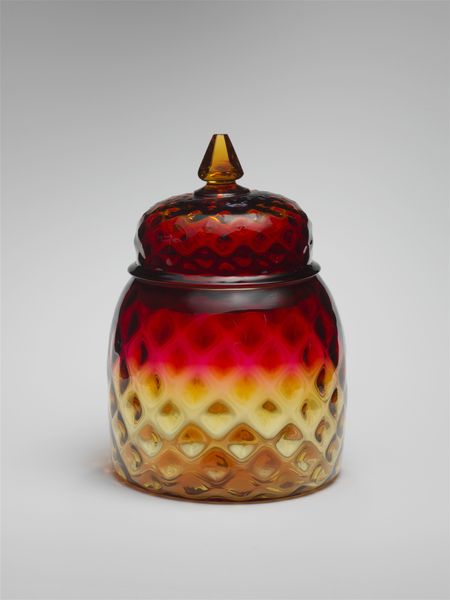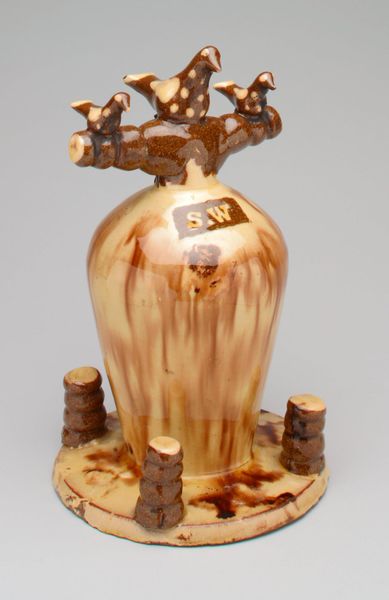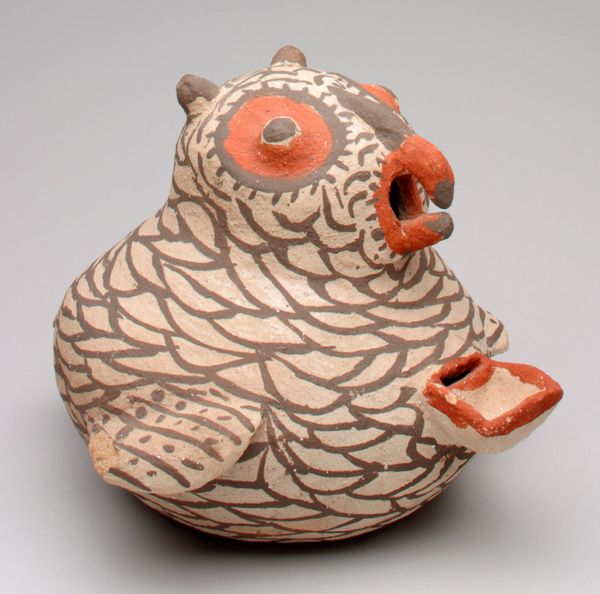
sculpture, wood
#
sculpture
#
wood
#
decorative-art
Dimensions: 4 3/8 x 3 1/16 x 3 1/16 in. (11.11 x 7.78 x 7.78 cm)
Copyright: Public Domain
Curator: Here we have an intriguing example of decorative art: a pineapple still bank crafted around 1860. It’s currently housed here at the Minneapolis Institute of Art, though its maker remains anonymous. Editor: It's remarkably…robust! I immediately notice the slightly rough, textured surface of the fruit, paired with those rather assertive green leaves on top. It feels very solid and weighty, despite being an object meant to store small amounts of money. Curator: Yes, pineapples in the 19th century, especially in America, carried a weighty symbolism themselves. As an imported fruit, they represented hospitality, wealth, and status. Displaying one, or an image of one, advertised one's success and good taste. A pineapple-shaped bank like this served as a constant reminder of those ideals. Editor: And crafted from wood no less. It makes me consider the artisan involved. Were they a master craftsman making decorative objects for affluent homes or perhaps someone producing them for a broader market, democratizing access to these symbols of wealth? I wonder if it was made via hand tools or with early manufacturing techniques…that changes how we view the object's place in society and how affordable or accessible the original would have been to its contemporary audiences. Curator: Exactly. And the distribution would be linked to the commercial activity in port cities, the sugar trade and even plantation labor practices that sustained this economic ecosystem of luxury and display. It reminds us that seemingly innocent domestic objects were once deeply intertwined with colonialist activities and structures of power. Editor: True, and back to the physicality—someone would have spent hours carving and painting this. The labor to create this tangible piece, and the idea that this functional piece would have sat somewhere in someone's house holding their small change adds an interesting dimension, as does the choice of rendering what is, essentially, a very specific natural object with so much, charming artifice. Curator: That blend of naturalism and artifice really brings this humble piece to life. A simple, decorative wooden carving becomes a portal to understanding 19th-century American aspirations and social dynamics. Editor: I find myself imagining all the hands that touched the raw material, shaped it, colored it, sold it and, ultimately, dropped their coins into it. Food for thought indeed.
Comments
No comments
Be the first to comment and join the conversation on the ultimate creative platform.
